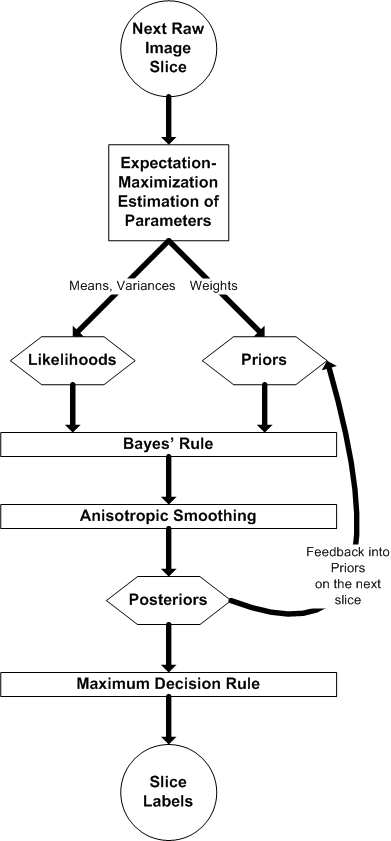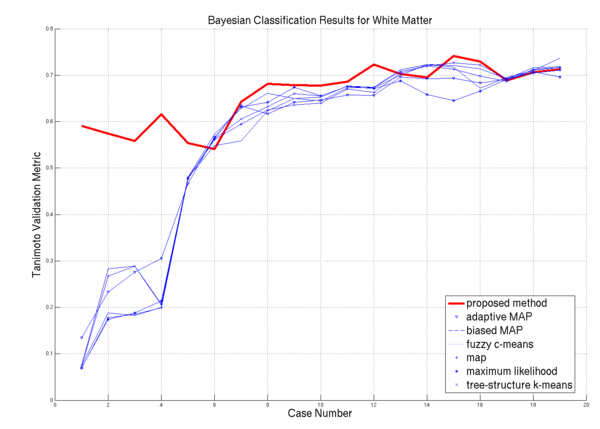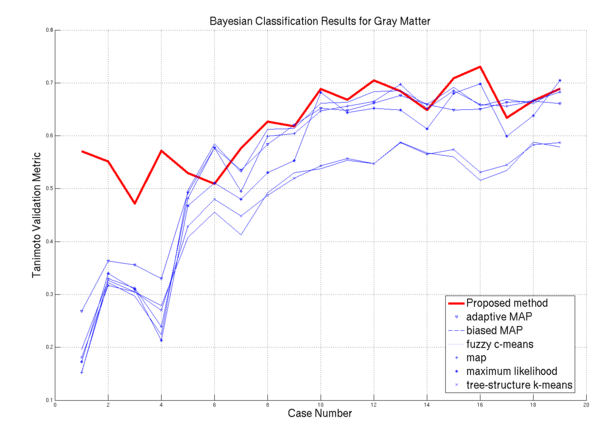Difference between revisions of "Projects:KnowledgeBasedBayesianSegmentation"
| Line 62: | Line 62: | ||
= Publications = | = Publications = | ||
| + | |||
| + | ''In Print'' | ||
| + | * [http://www.na-mic.org/Special:Publications?text=Projects%3AKnowledgeBasedBayesianSegmentation&submit=Search&words=all&title=checked&keywords=checked&authors=checked&abstract=checked&sponsors=checked&searchbytag=checked| NA-MIC Publications Database] | ||
''In Press'' | ''In Press'' | ||
| − | |||
* J. Melonakos, Y. Gao, and A. Tannenbaum. Tissue Tracking: Applications for Brain MRI Classification. SPIE Medical Imaging, 2007. | * J. Melonakos, Y. Gao, and A. Tannenbaum. Tissue Tracking: Applications for Brain MRI Classification. SPIE Medical Imaging, 2007. | ||
| − | |||
| − | |||
| − | |||
| − | |||
= Links = | = Links = | ||
Revision as of 04:36, 9 October 2007
Home < Projects:KnowledgeBasedBayesianSegmentationBack to NA-MIC_Collaborations, Georgia Tech Algorithms
Contents
Knowledge Based Bayesian Segmentation
This ITK filter is a segmentation algorithm which utilizes Bayes's Rule along with an affine-invarient anisotropic smoothing filter.
Description
Use Case
I'd like to segment a volume or sub-volume into 'N' classes in a very general manner. I will provide the data and the number of classes that I expect and the algorithm will output a labelmap with 'N' classes.
Data
We have applied this algorithm to 20 normal brain MRI data-sets. We used publicly available data-sets from the Internet Brain Segmentation Repository (IBSR) offered by the Massachusetts General Hospital, Center for Morphometric Analysis. The IBSR data-sets are T1-weighted, 3D coronal brain scans after having been positionally normalized. Manual expert segmentations for these data-sets are publicly available and represent the ground truth used in this work.
Algorithm
This algorithm can be cast in either a static or dynamic framework. In the static framework, the following is the algorithm:
- The user sets the number of distinct classes for segmentation: 'N'
- Generate 'N' prior images (default, 'N' uniform prior images)
- Generate 'N' statistical distributions (default, 'N' normal distributions)
- Generate 'N' membership images by applying the statistical distributions to the raw data
- Generate 'N' posterior images by applying Bayes' rule to the prior and membership images
- Smooth the posterior images for 'm' iterations using an affine-invarient anisotropic smoothing filter and renormalize after each iteration (default, m = 5)
- Apply maximum a posteriori rule to apply labeling and finalize segmentation
In the dynamic framework, the following image depicts the adaptation of the static framework to the dynamic formulation:
The ITK filter design
Some Results
Project Status
- Fully incorporated into itkBayesianClassificationImageFilter and itkBayesianClassificationInitializationImageFilter in ITK CVS.
- Fully wrapped in VTK for use in Slicer.
- The working ITK code has been committed to the SandBox
Key Investigators
- Georgia Tech: John Melonakos, Yi Gao, Allen Tannenbaum
- Kitware: Luis Ibanez, Karthik Krishnan
Publications
In Print
In Press
- J. Melonakos, Y. Gao, and A. Tannenbaum. Tissue Tracking: Applications for Brain MRI Classification. SPIE Medical Imaging, 2007.




